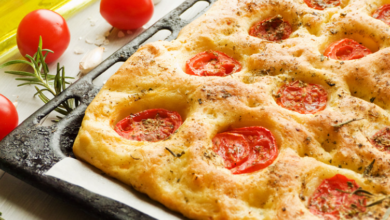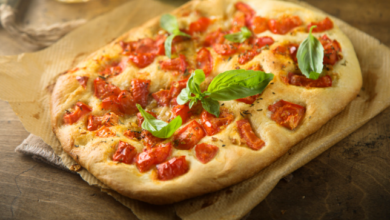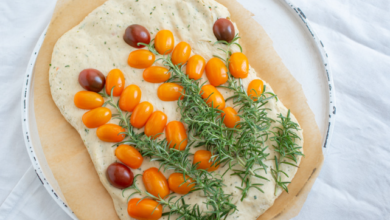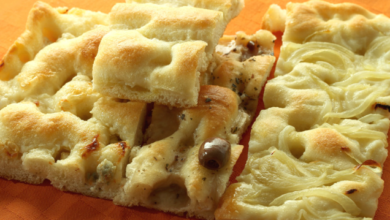Is Focaccia Dough Sticky? Follow These Tips
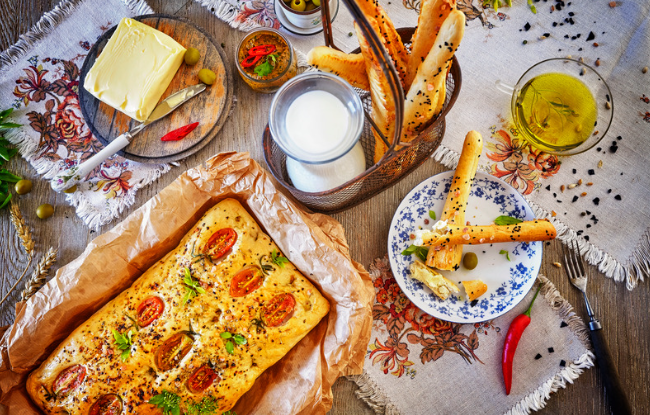
What To Know
- Aim to knead the dough for just enough time to form a smooth, elastic ball that does not stick to your hands or the work surface.
- By choosing the right flour, controlling the water content, kneading for the appropriate time, managing the temperature and humidity, and using oil judiciously, you can achieve a focaccia dough that is both manageable and produces a delicious, authentic loaf.
- Flour your hands and the work surface, use a dough scraper, add more flour gradually, or let the dough rest to relax the gluten.
Focaccia, an Italian flatbread, is renowned for its soft, airy texture and golden-brown crust. However, many novice bakers often encounter a common dilemma: is focaccia dough supposed to be sticky? The answer is both yes and no. Understanding the factors that contribute to the stickiness of focaccia dough is crucial for achieving the perfect loaf.
Flour Choice:
The type of flour used plays a significant role in determining the stickiness of focaccia dough. Bread flour, with its higher protein content, absorbs more water and results in a dough that is naturally stickier. All-purpose flour, on the other hand, has a lower protein content and produces a less sticky dough.
Water Content:
The amount of water added to the dough directly affects its stickiness. Too much water can lead to an excessively sticky dough, while too little water will result in a dry, crumbly dough. The ideal water content for focaccia dough is approximately 60-70% of the flour weight.
Kneading Time:
Kneading the dough develops the gluten network, which provides structure and elasticity. However, over-kneading can also make the dough sticky. Aim to knead the dough for just enough time to form a smooth, elastic ball that does not stick to your hands or the work surface.
Temperature:
Dough temperature can influence its stickiness. Warm dough is generally stickier than cold dough, as the gluten network is more relaxed and hydrated. To avoid excessive stickiness, keep the dough temperature between 70-75°F (21-24°C).
Humidity:
The humidity of the environment can also affect the stickiness of focaccia dough. In humid environments, the dough absorbs moisture from the air and becomes stickier. To prevent this, use a dough scraper or lightly flour the work surface to reduce sticking.
Oil Content:
Adding oil to focaccia dough can help reduce stickiness. The oil acts as a lubricant, preventing the dough from sticking to itself or the work surface. However, using too much oil can make the dough greasy and compromise its texture.
Proofing Time:
During proofing, the dough rises and develops flavor. However, prolonged proofing can lead to the breakdown of the gluten network, making the dough sticky. Proof the dough for the recommended time, which is typically 1-2 hours at room temperature.
How to Handle Sticky Focaccia Dough:
If your focaccia dough is too sticky, here are some tips to handle it:
- Flour your hands and the work surface: Lightly flour your hands and the work surface to prevent the dough from sticking.
- Scrape the dough: Use a dough scraper to scrape the dough off the work surface or bowl.
- Use a wet bench: Dip your hands in water before working with the dough to reduce stickiness.
- Add more flour gradually: If necessary, add small amounts of flour to the dough while kneading until it reaches the desired consistency.
- Let the dough rest: Allow the dough to rest for 15-30 minutes before shaping to give the gluten time to relax.
In a nutshell:
Understanding the factors that contribute to the stickiness of focaccia dough is essential for successful baking. By choosing the right flour, controlling the water content, kneading for the appropriate time, managing the temperature and humidity, and using oil judiciously, you can achieve a focaccia dough that is both manageable and produces a delicious, authentic loaf.
Popular Questions
Q: Why is my focaccia dough so sticky?
A: The dough may be sticky due to excessive water content, insufficient kneading, warm temperature, high humidity, or low flour content.
Q: How do I make focaccia dough less sticky?
A: Flour your hands and the work surface, use a dough scraper, add more flour gradually, or let the dough rest to relax the gluten.
Q: Can I add more oil to reduce the stickiness of focaccia dough?
A: Yes, but use oil sparingly to avoid making the dough greasy.
Q: What happens if I over-knead focaccia dough?
A: Over-kneading can make the dough tough and sticky due to excessive gluten development.
Q: Is it okay to use all-purpose flour for focaccia dough?
A: Yes, but bread flour with its higher protein content will produce a more authentic focaccia with a better rise and texture.

